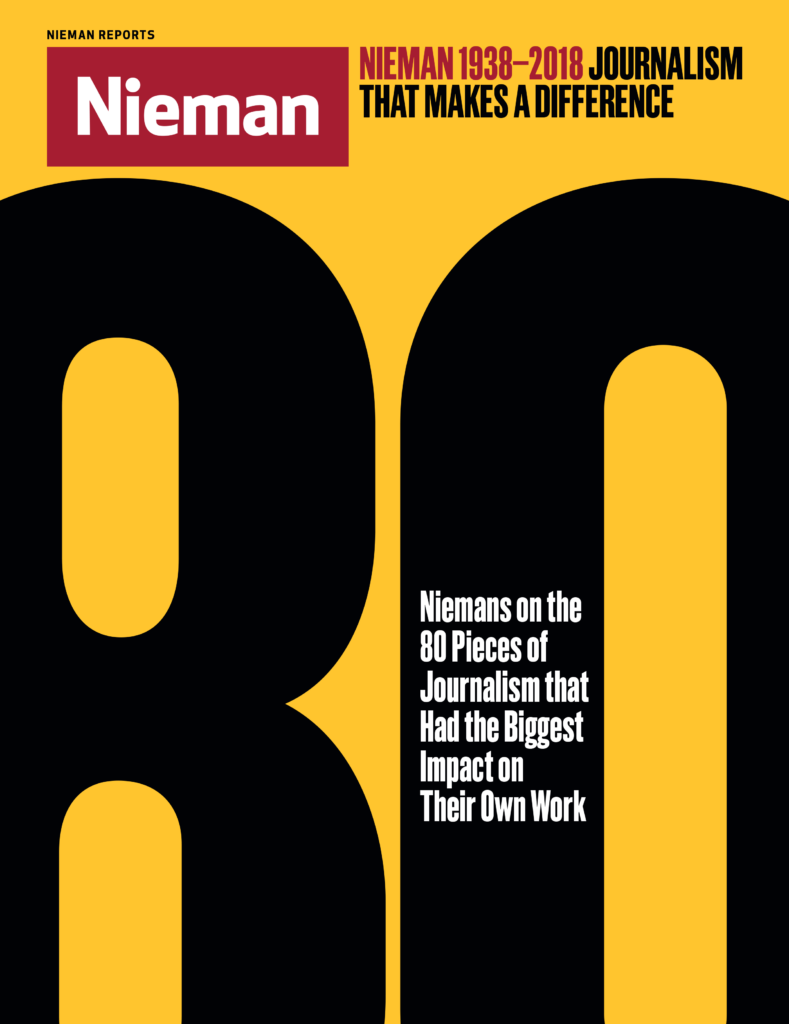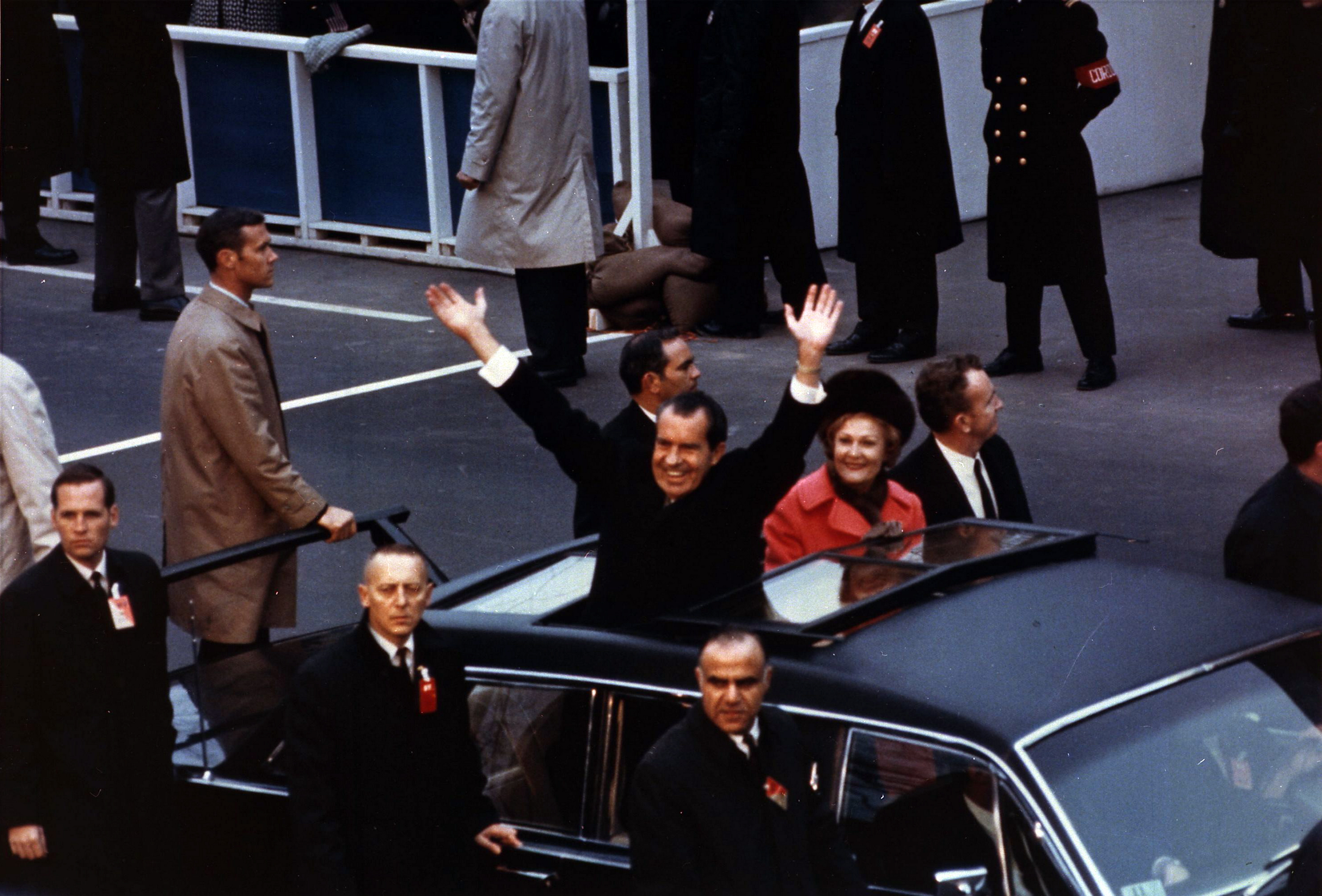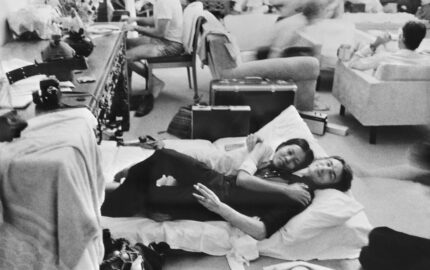
How are great journalists made? Often, it’s pieces of great journalism that help form them, influencing their lives or careers in an indelible way. To celebrate the Nieman Foundation for Journalism’s 80th anniversary in 2018, we asked Nieman Fellows to share works of journalism that in some way left a significant mark on them, their work or their beat, their country, or their culture. The result is what Nieman curator Ann Marie Lipinski calls “an accidental curriculum that has shaped generations of journalists.”
I have often been inspired by beautifully reported and written narrative histories that bring the “deeper news” to life. The one that made the greatest impact on me as a young reporter was Godfrey Hodgson’s magisterial book “America in Our Time,” his synthesis of what he had observed as a foreign correspondent from Britain. Looking back two decades, he taught me how to look for the forces and the threads underneath the surface of events. He moved me way beyond the stereotypes to understand how and why America had been transformed during the 1960s. And he provided the most compelling explanation, even then, of the rise of conservatism that culminated in Ronald Reagan’s election and has shaped U.S. politics ever since. The story he told still informs my world view and inspires me, always, to look for ways to illuminate the underlying narrative.
America in Our Time
By Godfrey Hodgson
Doubleday & Company, Inc., 1976
Excerpt
In 1960, the United States had just enjoyed the most prosperous year in its history, as it had come to expect to do as a matter of course every year. The gross national product had passed $500 billion for the first time. Yet the economic situation was not good. Growth had been sticky and slow. Unemployment stubbornly refused to drop. People were talking about a recession. Balance-of-payments difficulties and foreign competition were beginning to cloud the future prospect. “This is the first time in my lifetime,” said William McChesney Martin, chairman of the Federal Reserve Board, “that the credit of the United States has been questioned. A serious shadow lies over the American business picture.”
That was the conservative view of the outgoing administration. The professors of the New Economics who were packing up to come down from Cambridge and New Haven, and a few other places, to join the new administration, were more impressed by the opportunity than by the danger. They believed they knew how to guarantee uninterrupted prosperity, unlimited growth. That was the secret they thought they had divined from the theories of John Maynard Keynes.
Reprinted by permission of SLL/Sterling Lord Literistic, Inc. Copyright by Godfrey Hodgson.



